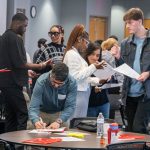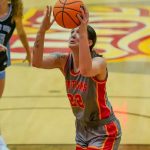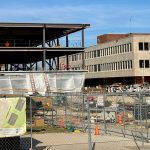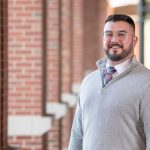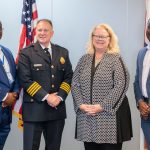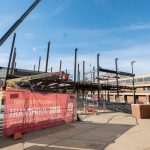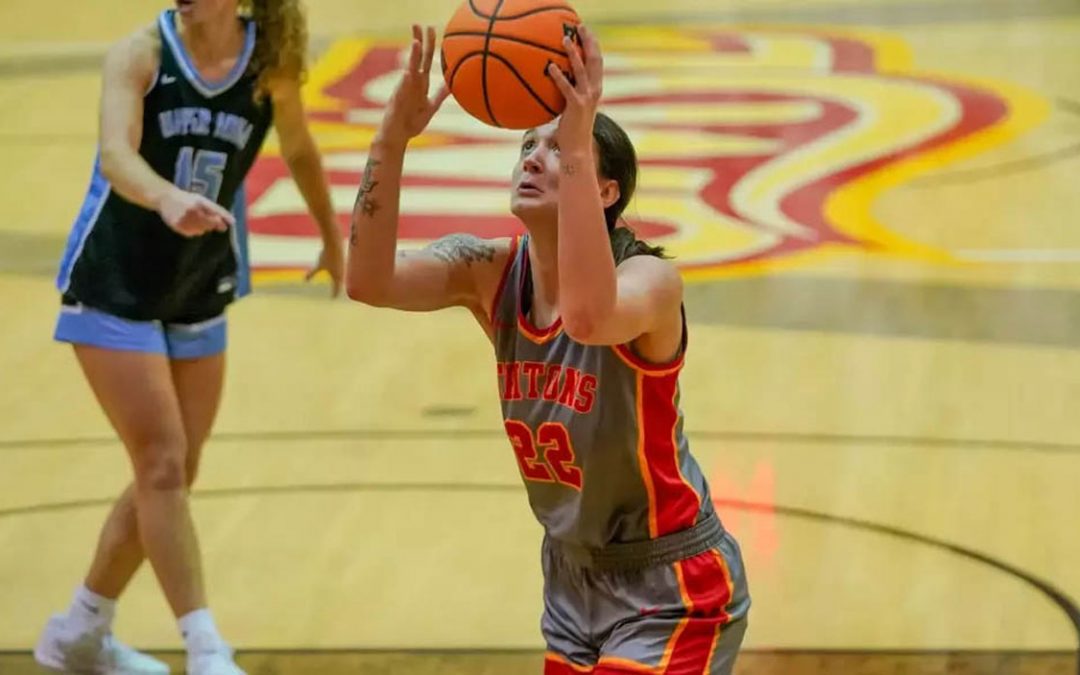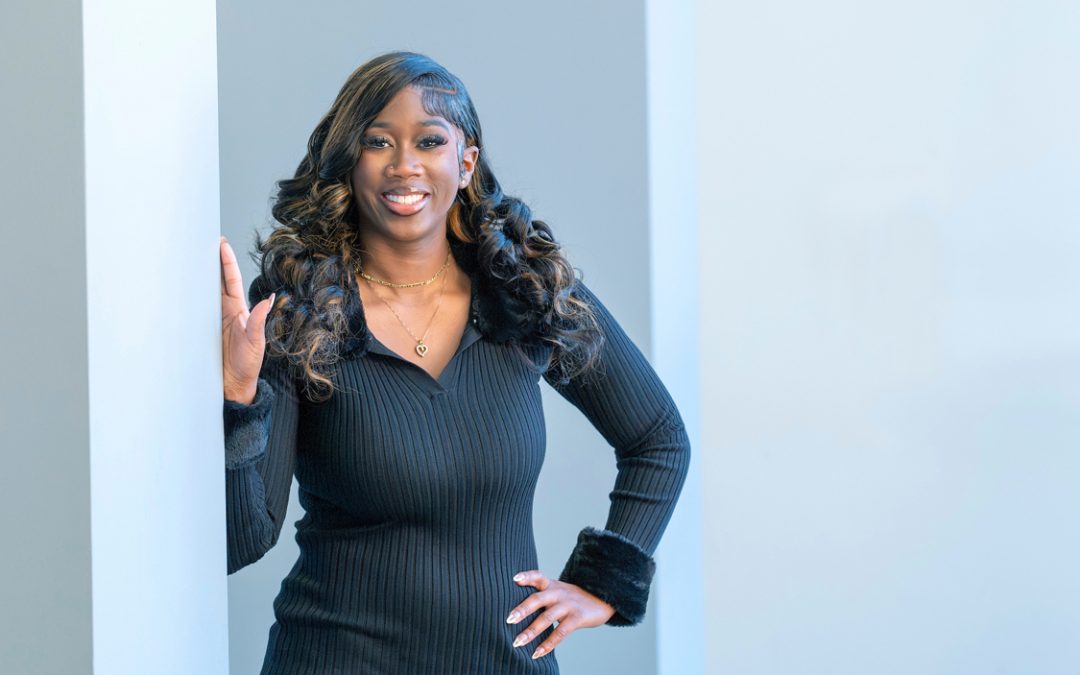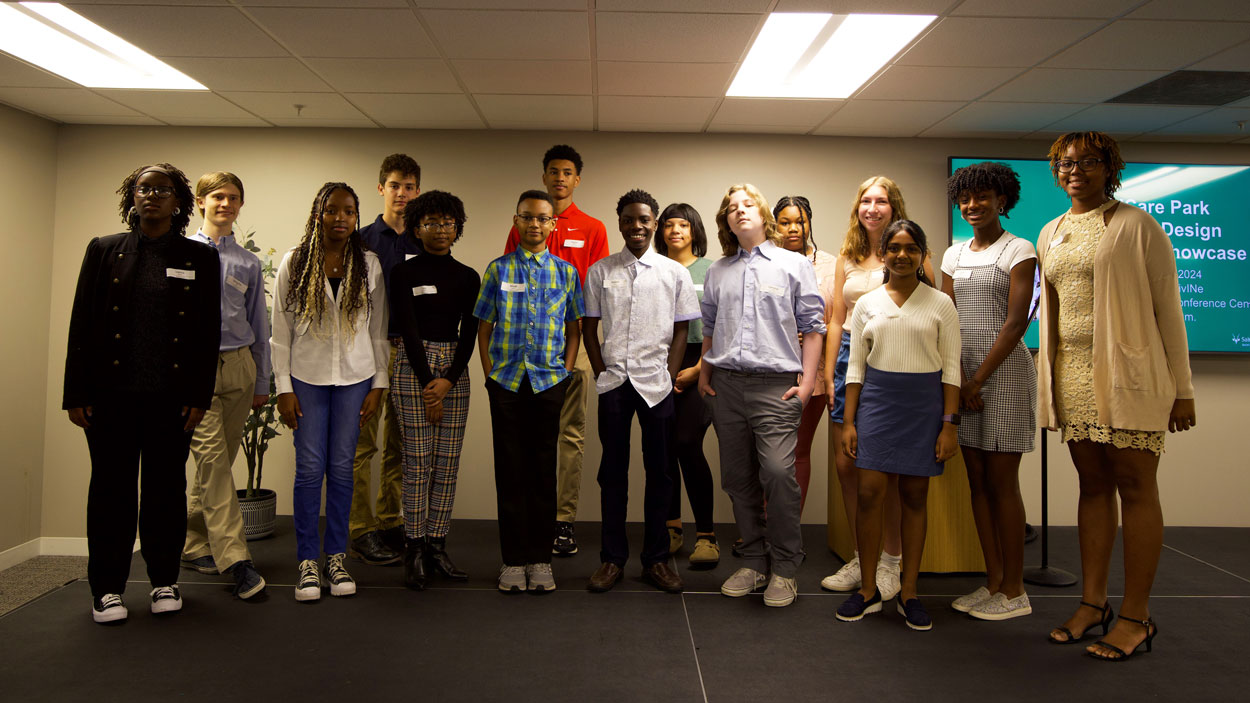
A group of 25 middle and high school students from around the St. Louis region participated in a co-design process with the Saint Louis Zoo and Community Innovation and Action Center to come up with potential educational programming ideas for the upcoming WildCare Park. (Photo by Danny Recklein)
Angela Mahianyu, a rising ninth grader at Westminster Christian Academy, has always loved animals – especially giraffes and elephants. So when she found out about the opportunity to help build her own youth program with the Saint Louis Zoo, she didn’t need much convincing.
Over the past three months, Mahianyu and students from various middle and high schools across the St. Louis region have been developing ideas for a youth program at the upcoming Saint Louis Zoo WildCare Park. The world-class safari park and conservation center is slated to open on 425 acres in north St. Louis County in 2027.
In order to give community members a say in what the youth program looks like, the Zoo teamed up with the Community Innovation and Action Center at the University of Missouri–St. Louis to implement a co-design process with area students. The collaborative process actively involves all stakeholders to ensure that all needs are met.
“We understand the need to make sure that their voices are heard,” said the Zoo’s Assistant Director of Education Jaclyn C. Johnson. “We don’t want to do cookie-cutter programming, taking what we’ve already done at the main campus and then just applying it at WildCare Park. Knowing that all communities are different, we want to build upon the things that they really want and desire, and not just what we think that they want to be involved in.”
The group of 25 students, ranging in ages from 13 to 18, worked together to come up with three distinct ideas for youth programming at the park: Digital Habitats, Nature Race and STEM Animal Tracks.
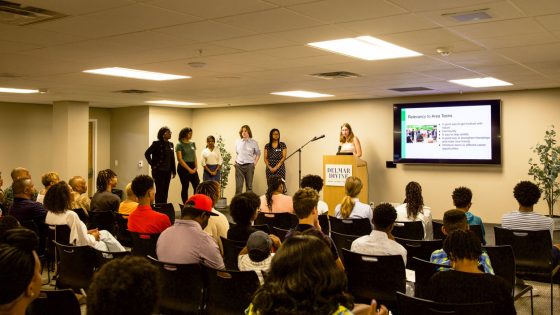
Students shared ideas for three different youth programs: Digital Habitats, Nature Race and STEM Animal Tracks. (Photo by Danny Recklein)
An investment in the community
Within the next 10 years, WildCare Park, made possible by donors, Zoo supporters and the taxpayers of St. Louis County, is expected to generate over $660 million in economic activity across the St. Louis region. From the beginning, the Saint Louis Zoo has been intentional about creating a youth program to connect the park to surrounding communities and giving community members a voice in developing that program.
CIAC, which engages with community partners to develop knowledge, connections and tools to advance equity across the St. Louis region, was a natural partner with whom to undertake the co-design process. The process was also supported by faculty and staff from the University of Missouri Extension Community Development and Youth Engagement team, including Community Development Specialist Dwayne T. James, 4-H Youth Development Specialist Melissa Scheer and 4-H Youth Program Associate Drachen Koester.
“One thing that we really try to do at CIAC is center community voice and priorities and focus on equity,” said Equity and Engagement Lead Sara Mohamed. “We have a lot of projects in which we are engaging either directly with community members or we’re engaging with partners that work with community. This project is kind of a mishmash of those two, because we are engaging directly with community, but we’re also engaging with our partners who do that direct work with community members. It’s something that we really value and is central to our mission.”
The co-design process came out of research found in the Zoo’s Community Engagement and Participatory Research Initiative conducted in 2019. In speaking with over 5,000 north St. Louis County community members and collecting survey data from 1,000 of them, the Zoo found that the majority wanted to see educational offerings for teens at WildCare Park, including volunteer opportunities, job training and nature-based learning experiences.
“The only real parameter we gave the teens was that we wanted the program to be designed for a teen audience,” said the Zoo’s Director of Conservation and Audience Research and Evaluation Amy Niedbalski. “We took the community feedback that we collected in 2019 and applied it to this process. We then had them help us co-design what they think would be a relevant and meaningful program for WildCare Park for other teens in and around the area.”
Nevaeh Neal, a rising senior at Hazelwood Central High School, is involved in many community groups around Florissant and was excited to help influence the programming at a project of this scale. She appreciated the Zoo’s efforts to involve the community – and specifically local teens – in the project and empower them to share their ideas.
“I thought it was really cool how community-oriented it was and how youth-focused it was,” she said. “It was really based on what we wanted and what our opinions were, and how we wanted the Zoo to benefit us as young people who live in that community. I thought that was really helpful, and also the push that we had to think bigger – it gave us the confidence that our ideas mattered and that they could be brought to life.”
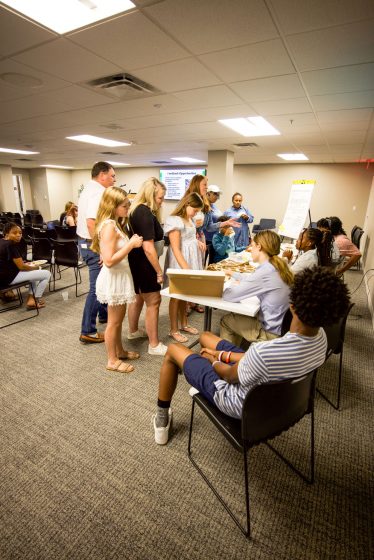
At a community showcase at Delmar DivINe in St. Louis on June 18, students presented their ideas and gathered feedback from the community. (Photo by Danny Recklein)
Engaging youth
At a community showcase at Delmar DivINe in St. Louis on June 18, Neal and 24 other students, selected from an applicant pool of 165, presented three distinct youth program ideas they developed for WildCare Park. CIAC Outreach Coordinator Rachel Goldmeier noted the impressive ideas the students came up with over just four sessions between April and June.
“I was very impressed with the speed in which they were able to come up with three distinct, polished, well-thought-out ideas that anybody at any age group would be interested in,” she said. “They came together, worked as a group and did a magnificent job – each team.”
Broken up into three groups, students shared ideas for three different youth programs: Digital Habitats, Nature Race and STEM Animal Tracks. A free, on-site class offered over eight sessions during the summer, the Digital Habitats program would offer an immersive learning experience in which students could learn about animal habitats both virtually and physically. The program would combine hands-on experiences with WildCare Park staff, including exploring biofacts such as skulls, antlers and pelts or shadowing zookeepers as they feed animals and clean their habitats, with virtual reality experiences that would allow teens to explore habitats they can’t see in person at WildCare Park.
“A lot of the program involves shadowing, because we want them to be able to see how the Zoo care workers work and then also learn about why these animals are endangered and how you can help them,” Mahianyu said.
Inspired by The Amazing Race, the Nature Race program would feature a competitive race and overnight stay in which teens would research animals and participate in hands-on activities such as a scavenger hunt, building bird feeders and more. In doing so, they’d learn about native wildlife, conservation work at WildCare Park and ways to help protect the environment.
Finally, the semester-long STEM Animal Tracks program is designed to teach teens about STEM and how these subjects can be used to help the Saint Louis Zoo and its animals. Participants would engage in habitat restoration and other conservation projects, and also receive mentorship and job shadowing experiences from Zoo professionals.
Neal said it was a fun experience to be part of, and she also enjoyed bouncing ideas off fellow students from across St. Louis and getting their perspectives.
“All of the participants came from different schools and are in different grades and some are in private, some were homeschooled,” she said. “It was really nice to see how North County as a whole is looked at from different perspectives and different ages and schools and what people wanted to see and experience.”
After presenting their ideas and receiving feedback, students will meet one more time with the co-design team in early July to see what feedback can be implemented. They’ll then turn their ideas over to the Zoo staff, who will determine which parts of the programming will be piloted first. Johnson, who said the Zoo has already begun investigating ways to implement VR technology experiences for guests, is excited about the Digital Habitats idea, but anticipates that they’ll pilot components from each of the proposed program ideas.
The Zoo team is also hoping that the model developed throughout this co-design process can help them continue to engage youth in the future with programs not only at WildCare Park, but also back at the Zoo in Forest Park.
“We’re hopeful this approach of designing programming together with communities is the future of conservation education for the Saint Louis Zoo,” Niedbalski said.
“And we know that not every single program that we develop will go through this process, but we all know that this is a best practice and we’re trying to make this part of our culture as the Conservation Education Department,” Johnson added. “We know co-design is a good model, and using it for WildCare Park is setting the stage. We’re all learning this process together and that’s helping us become better educators.”
CIAC is also taking lessons from the experience and hopes to implement the co-design model in future partnerships with a variety of community partners.
“We’ve been really excited to be a part of this, and also to see what kind of future collaborations that this could inspire as well,” Goldmeier said. “Being able to see these different groups come together to build programming as a unit and watching that collaboration – how quickly it’s come together – it’s really just a source of pride in what we’ve been able to build as two teams working on something of great importance for the St. Louis community.”



